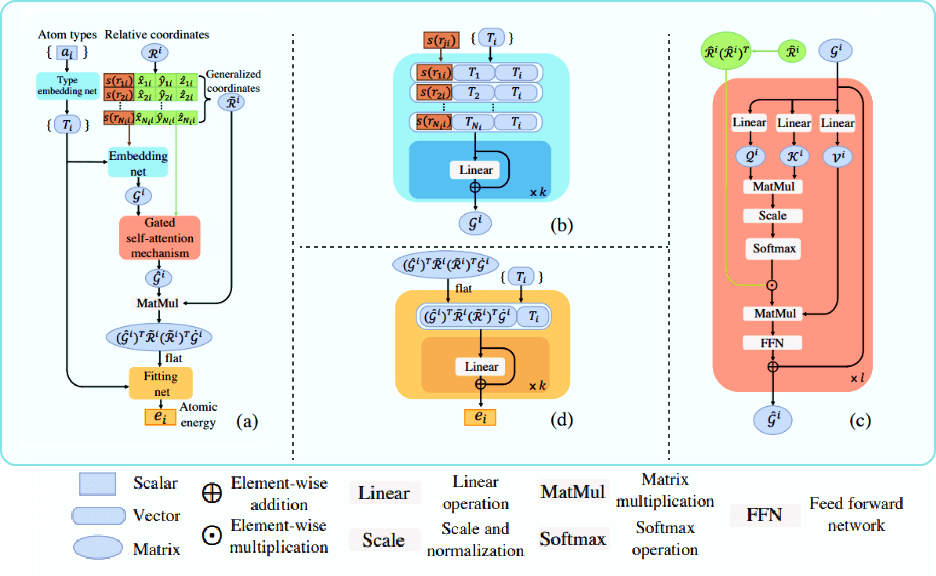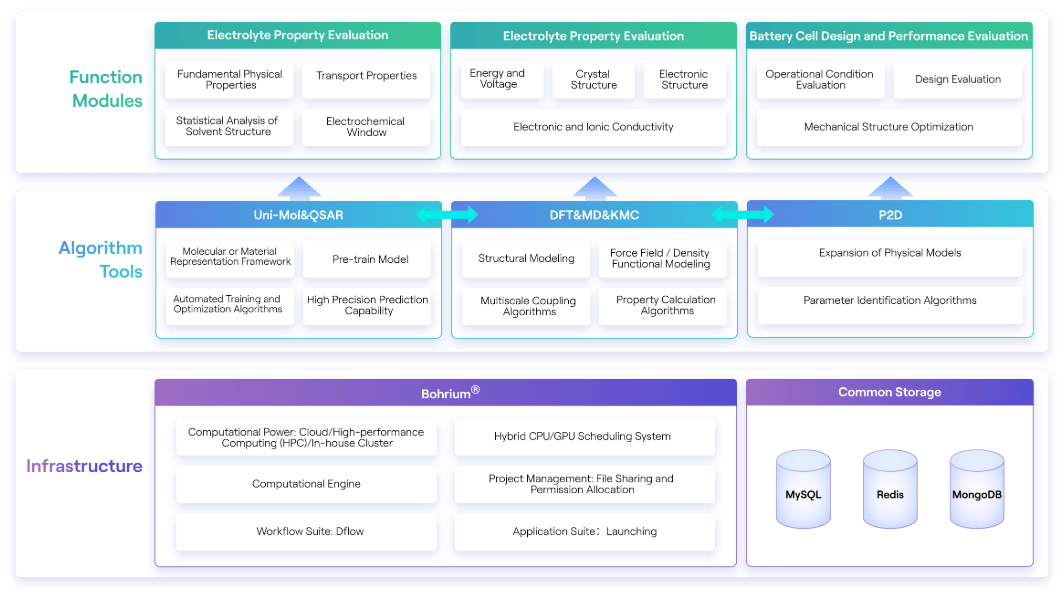Atombeat is a global trailblazer in "AI for Science (AI4Sci)," a novo research methodology aimed at tackling scientific obstacles by fusing artificial intelligence with physics-based modeling and simulation. As the local service provider of the leading AI4Sci company DPT, Atombeat draws on DP's state-of-the-art technology, robust products, and versatile services to offer advanced research infrastructure and platform-based solutions. The Bohrium® scientific computing platform, Hermite® drug discovery platform, RiDYMO® dynamics platform, and Piloteye® battery design automation platform have supplied formidable research capabilities and competitive edges for numerous top-tier companies, rapidly growing startups, and esteemed research institutions.


Uni-MolA Large-Scale Pre-trained Model for 3D Molecular Representation Learning



- Pre-training on billions of 3D molecular structures for representation learning, specifically tailored for property prediction and structural optimization design.
- Encompassing fields such as pharmaceuticals, materials, and chemical engineering, achieving top-class performance in physicochemical, quantitative, and biochemical property predictions.
- Supporting efficient molecular design, empowering practical domains like drug discovery, material optimization, and energy production.
Uni-Mol
Uni-RNAA Large-Scale Pre-trained Model For Nucleic Acids



- We have collected and organized the largest available RNA sequence database to train the most extensive pretraining model for nucleic acids.
- Our model possesses a powerful ability to represent functional structures, consistently outperforming existing algorithms in all known tasks.
- Uni-RNA comprehensively empowers mRNA and nucleic acid drug research and development, accelerating the advancement of new therapeutic approaches.
Uni-RNA
DPA-1A Transferable Interatomic Potential Pre-trained Model



- The world's first pre-trained model covers 70 elements from the periodic table.
- Possesses strong transferability, enabling the fine-tuning of a reliable potential function model with minimal samples on a new system.
- Significantly reduces data dependency for model construction.
DPA-1
Uni-FoldA High-Precision Universal Protein Folding Model



- Unveiling the first open-source Fold model in the domestic market with training code and database, boasting accuracy comparable to AlphaFold2.
- Efficient and precise inference capabilities, supporting complex real-world scenarios such as large proteins, protein complexes, symmetrical proteins, and more.
Uni-Fold
Uni-DockA High-Performance Docking Engine for Large-Scale Database Virtual Screening With GPU



- Maintaining comparable accuracy to traditional molecular docking, Uni-Dock achieves an acceleration rate of over 1600 times on NVIDIA V100 GPU compared to AutoDock Vina's single-core calculation. This performance is more than 10 times faster than other GPU-accelerated molecular docking engines.
- Uni-Dock can complete virtual screening of over 38.2 million molecular databases in less than 12 hours, bringing the virtual screening of large-scale databases, with tens of millions of molecules, into a practical, accessible, and reliable era.
Uni-Dock

Hermite®
Hermite® is a new-generation drug computing design platform which integrates artificial intelligence, physical modeling and high-performance computing to provide a one-stop computing solution for preclinical drug research and development. Main functions of Hermite® include structure modeling, drug-target binding mode prediction, virtual screening and lead optimization, etc. Via the form of web access, Hermite® provides an interactive molecular display interface, which supports cross-window intelligent collaboration, various molecular displays and functions, and facilitates users to view, analyze and share proteins and drug molecule structure and simulation data. Meanwhile, Hermite® supports deployments both on premise and on cloud.
RiDYMO®
Powered by AI for Science new paradigm, our multidisciplinary team perfectly meets the emerging trends in both small molecule and biologics drug design. With our new-generation drug design and computing platform Hermite®, we aspire to drive innovation in drugging the 'undruggables'.


Bohrium®
scientific computing platformBohrium® is a user-friendly research platform with abundant computing power. Bohrium® efficiently pools and intelligently schedules multi-cloud and multi-supercomputing resources, and offers rich collaboration features for more convenient teamwork.
- - Comprehensive nodes control: Quick login, remote debugging, clear and transparent
- - Precise budget management: Budget allocation,meticulous monitoring, avoid overspending
- - Environment image sharing: Created by one person, used by all, time-saving and efficient
- - Instant job management: Obtain results, rapid reuse, convenient management

Piloteye®
battery design automation platformDP Technology systemically empowers battery material development and cell design, addressing the key R&D needs of enterprises in the battery domain. Our efforts are aimed at all engineers and scientists in the battery R&D field, with a focus on theoretical evaluations of electrolyte properties, cathode and anode material properties, as well as simulations of cell performance. We are committed to providing an innovative and convenient platform that combines cutting-edge algorithms with industry know-how, reducing the barriers to traditional computational simulation software. This focus on key industry issues bridges the gap between computational analyses and experimental communication.
- - Evaluations of electrolyte properties including fundamental physical properties, transport properties, solution structure statistical analysis, and electrochemical window prediction.
- - Evaluations of cathode and anode material properties including energy voltage, crystal structure, electronic structure, electronic conductivity, and ionic conductivity.
- - Assessments of cell design and performance including operational condition evaluation, design assessment, and mechanical structure optimization.

